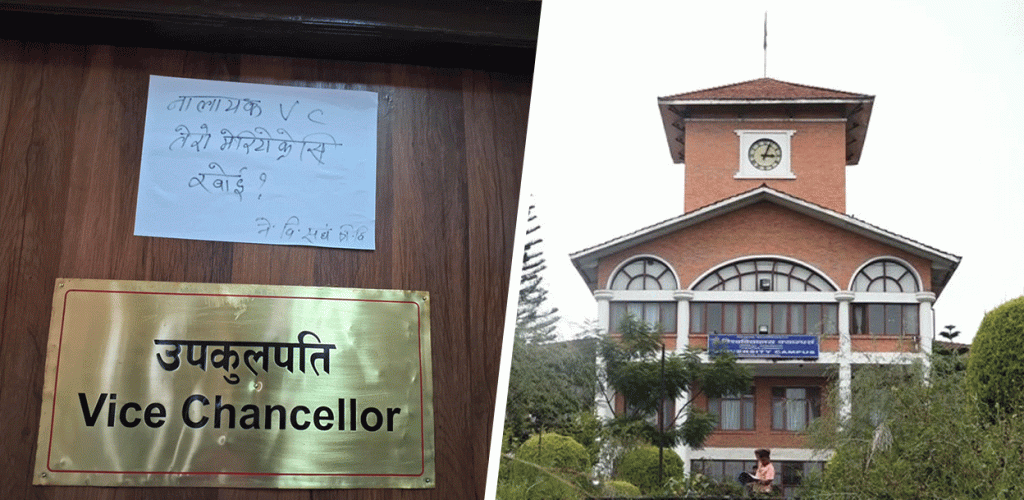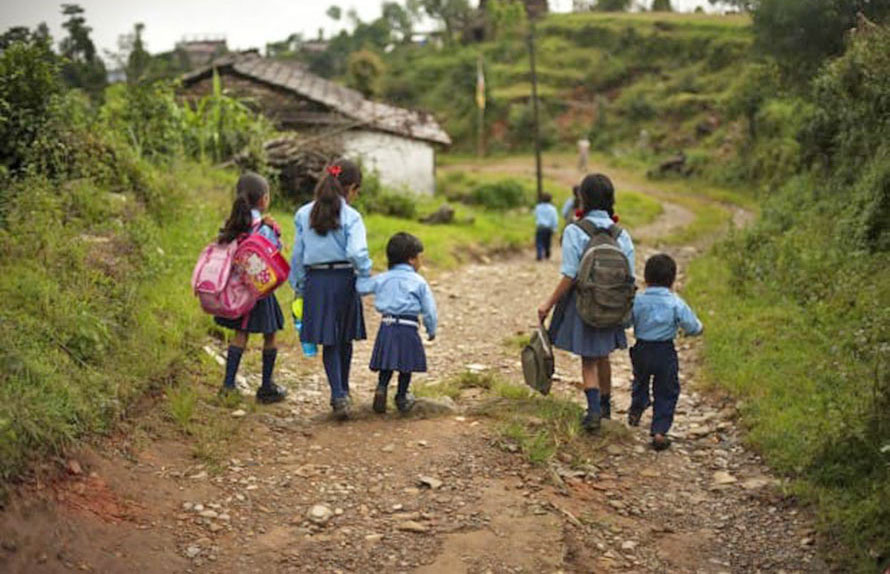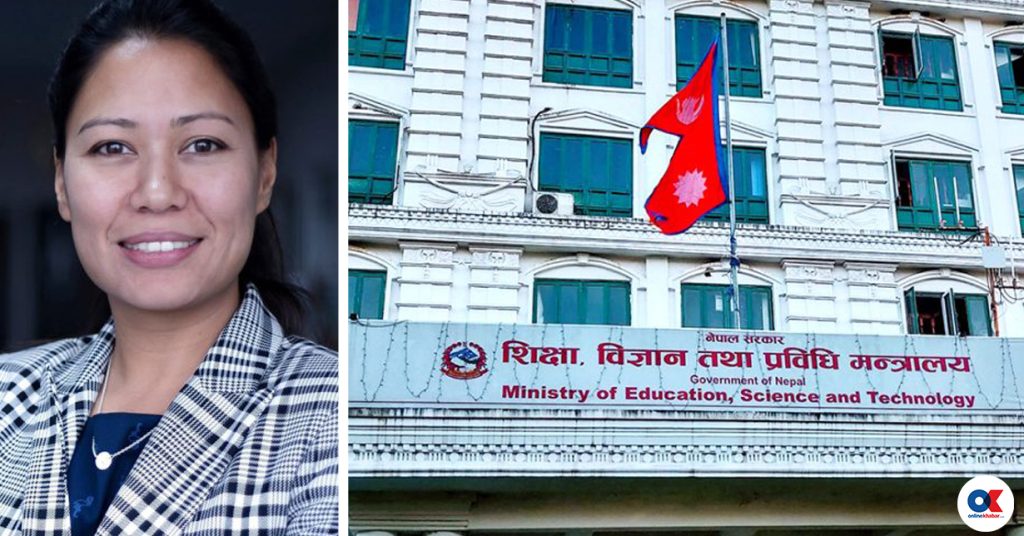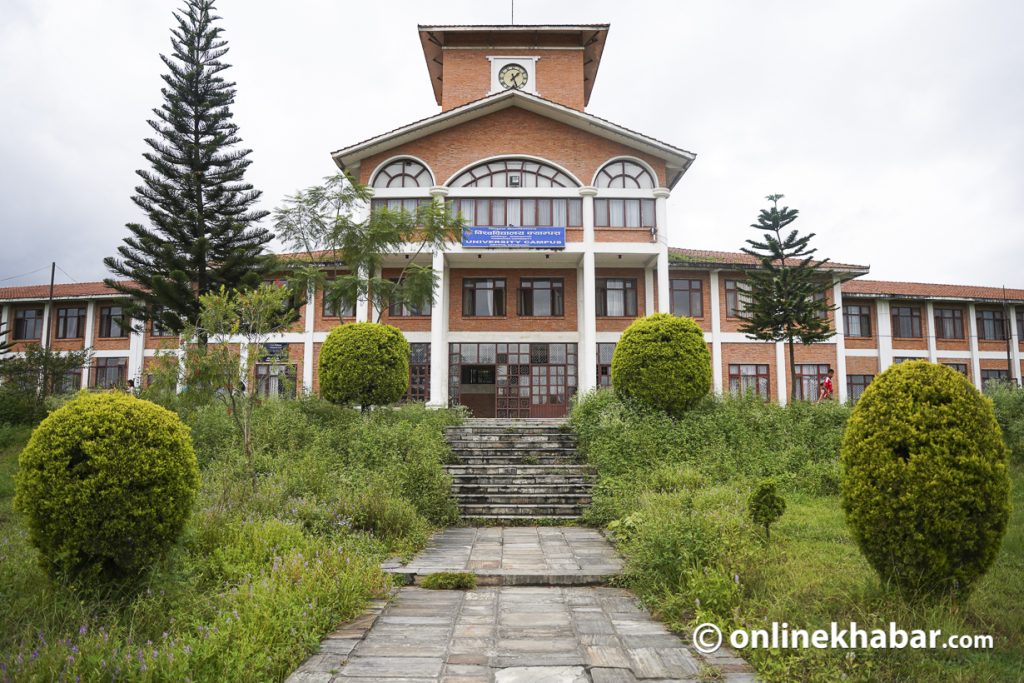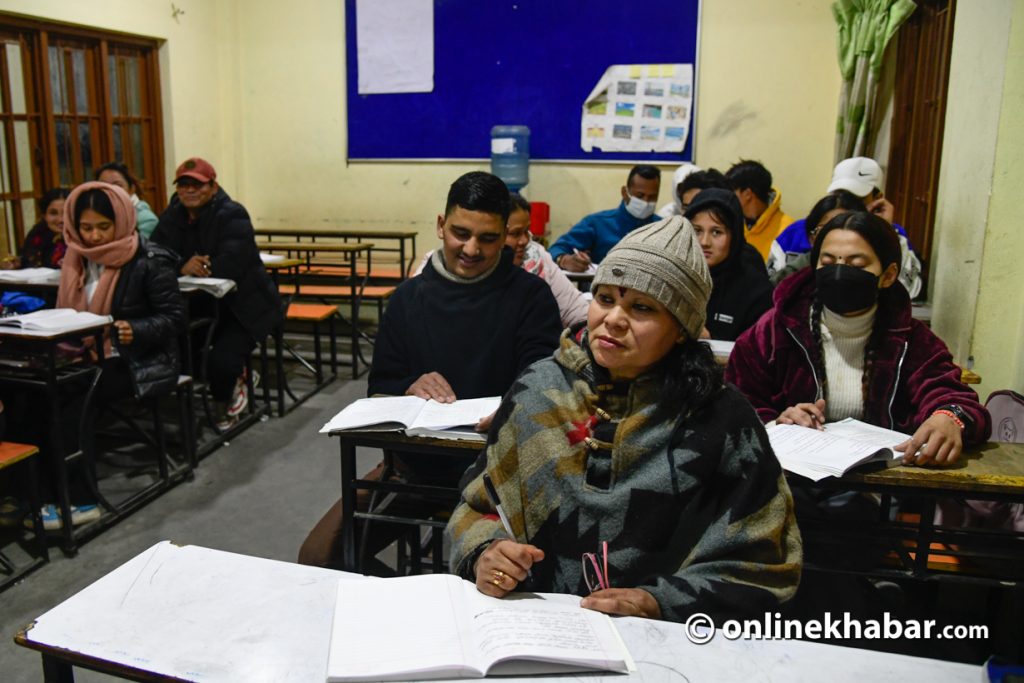
Punya Prasad Subedi, 34, of Tyamkemaiyum, Bhojpur, works in a cargo company. As soon as his shift ends at 5 pm, he picks up his bag and heads to school. Subedi is in class 10 and is currently studying at the Nandi Ratri Secondary School.
Having realised the importance of learning to read and write late in life, Subedi enrolled at the school in 2018.
Subedi has two jobs. He works at a shoe factory and a cargo factory and has to run errands like collecting money and cheques and depositing it in the bank.
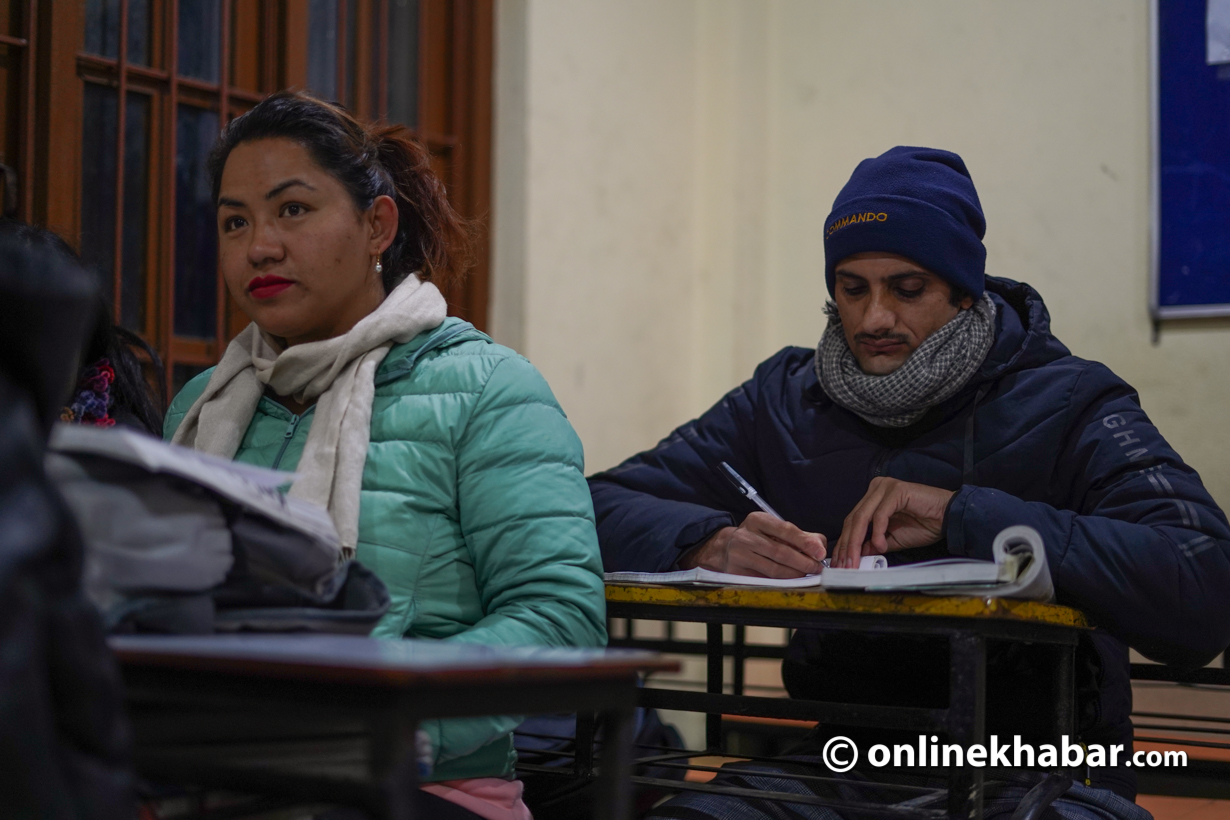
“I faced issues as I could not read the names of places and was not able to fill bank vouchers,” he said. “There were days I would come home and cry regretting not learning how to read and write at a young age.”
One day, however, his friends told him about Nandi Ratri Secondary School, which offered evening classes for individuals seeking to resume their education. This prompted him to enrol in class 8 in 2018, after which his work life became simpler.
Bodhkumari Ghorasaini from Kavre also discovered a new opportunity after enrolling at Nandi Ratri Secondary School. Ghorasaini got married while she was studying in class 5. Now, as she is in class 8, she feels reassured that returning to school was the right decision for her.
“I used my free time to get back to school and finish my secondary education,” she says.
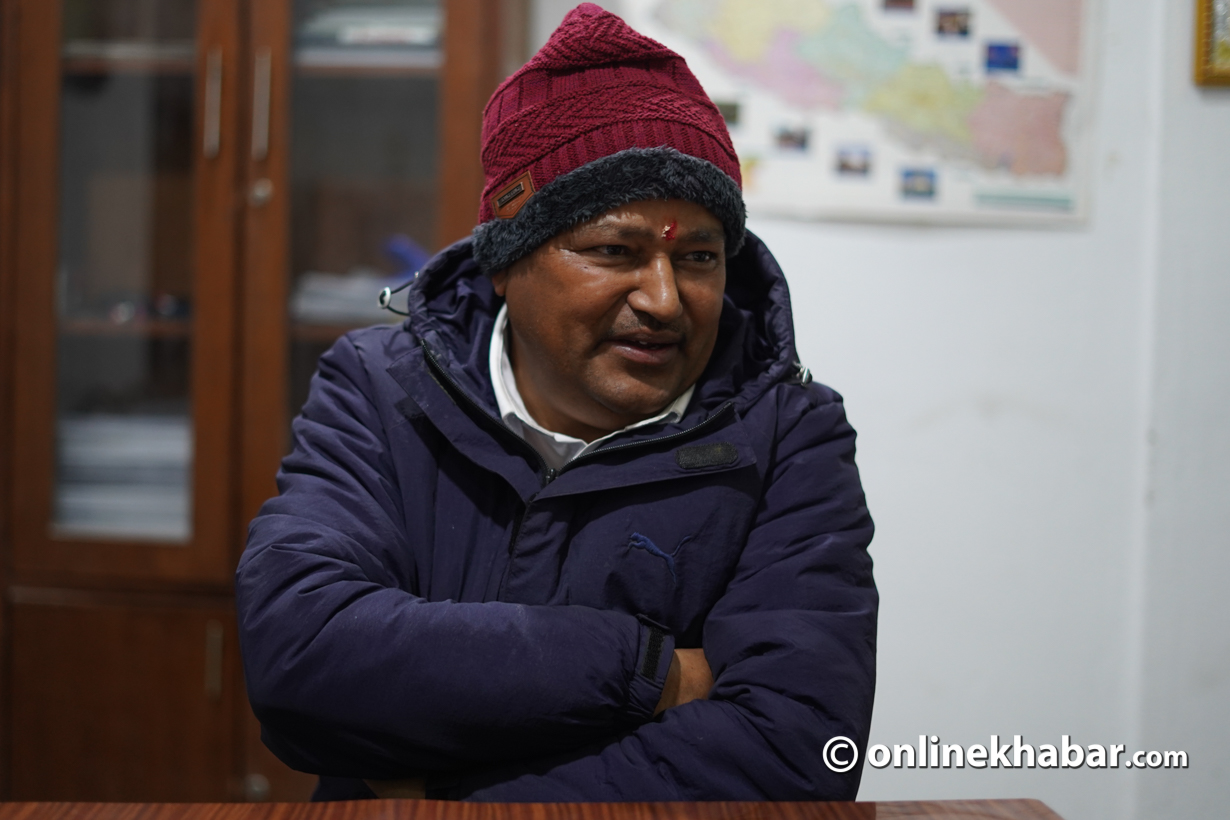
Chetanath Parajuli, 55, a surveyor by profession is also pursuing studies in class 12 at this school. In 2022, while searching for a college for his son who had just passed his Secondary Education Examination (SEE), he came across Nandi Ratri Secondary School. Impressed by its offerings, he decided to enrol himself for further education alongside his son.
“The night classes are great for people like me. I told my son I too would be joining a high school,” says Parajuli.
Nights at Nandi Ratri Secondary School
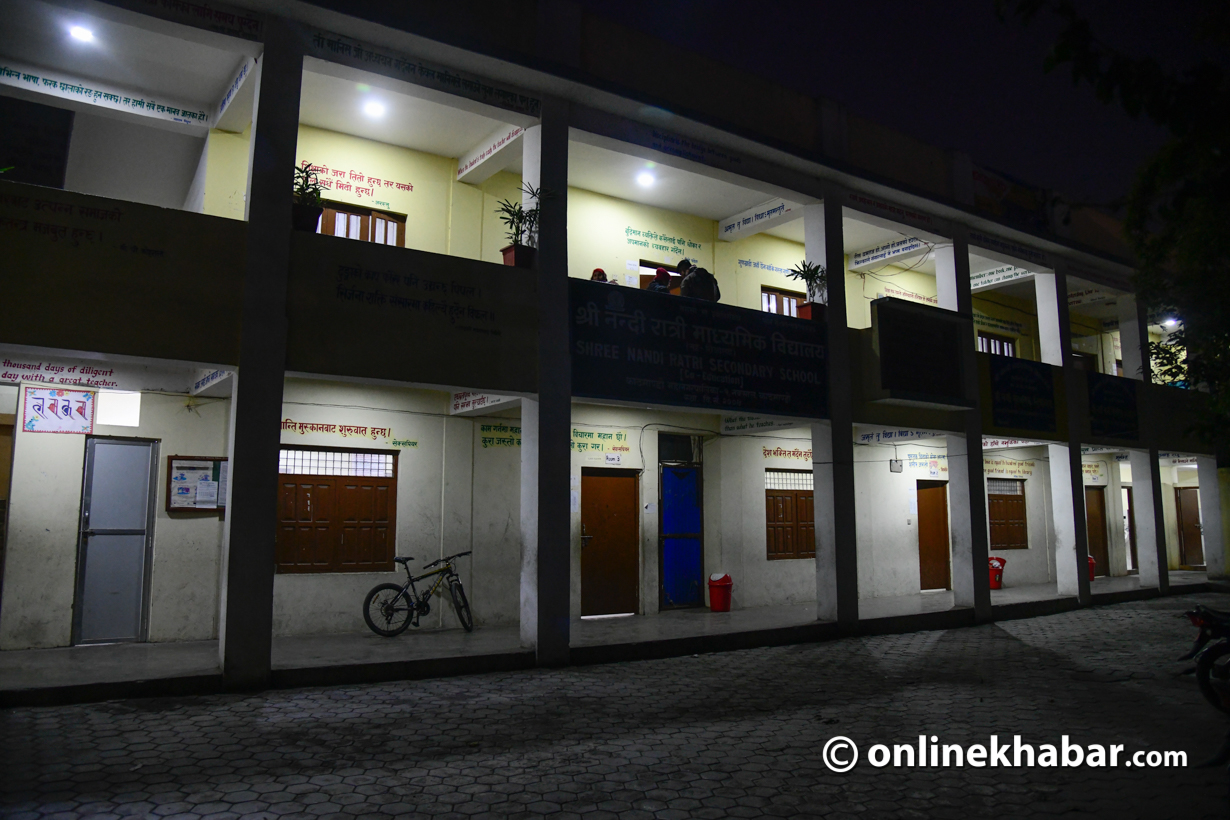
Around 300 students of varying age groups, who missed school for various reasons and cannot study in the afternoon, are attending classes at Nandi Ratri Secondary School in Naxal. Classes are conducted from 5 pm to 9 pm, and during the winter months, they conclude by 8:30 pm.
“It has been a place for those who want to study,” says Principal Rajesh Humagain.
According to social studies teacher Amrit Thapa Magar, the majority of students understand the significance of education. Therefore, there is minimal disturbance in the classroom, with everyone attentively listening to the teachers.
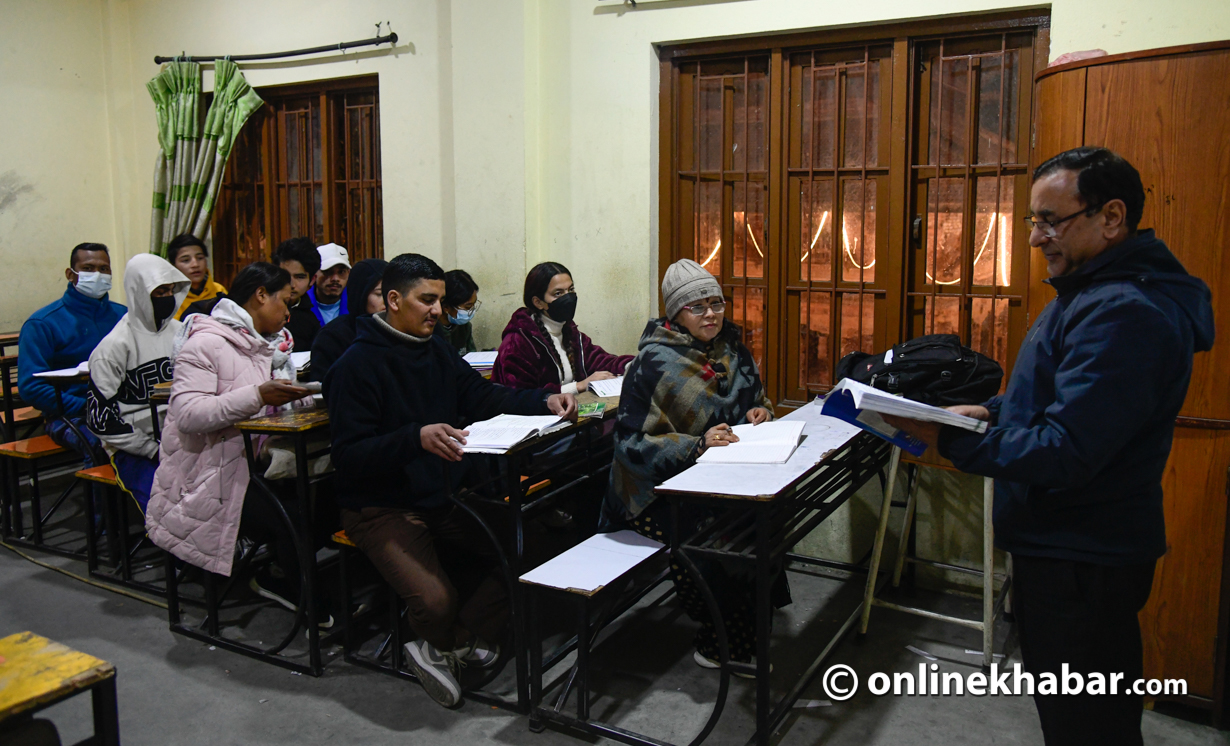
“Teaching is not challenging. They listen carefully and understand what we are trying to say,” says Magar. “However, they do need to put a little effort into reading and writing.”
Deepak Aryal, an English teacher, said that some, however, find it hard to set a basic routine having come back to school after years of hiatus.
“For such students, we focus on teaching basic concepts and skills,” says Aryal.
To read and write
Naresh Budhathoki, 29, studies in class seven at the school. Within two years of admission, he managed to learn the Nepali alphabet and how to read Nepali.
“The world becomes colourful when you learn to read. I realised I was in the dark for most of my life,” he said.
Budhathoki came to Kathmandu at 14 and started doing menial jobs to make ends meet. In 2015, he went to Malaysia for foreign employment and returned 15 months later.
“Had I known how to read and write, I would have found a better job there and not been exploited as I was,” he says.
Sanch Moktan, aged 40, has recently enrolled in class eight at the school. As an office assistant at Nepal Law Campus, Moktan shared that he has gained significant knowledge in the eight months since joining the school. Despite understanding the teacher’s instructions, he struggles with writing.
“It becomes very challenging if the brain and hands don’t synchronise,” he says.
While working in the examination department of the campus, Moktan assisted other staff by managing admit cards, mark sheets, and student forms. However, his inability to read posed difficulties.
“I wanted to assist the teachers during the examination form processing, but my inability to read hindered me. That’s why I decided to pursue education and enrolled in school,” he said
Background on Nandi Ratri Secondary School
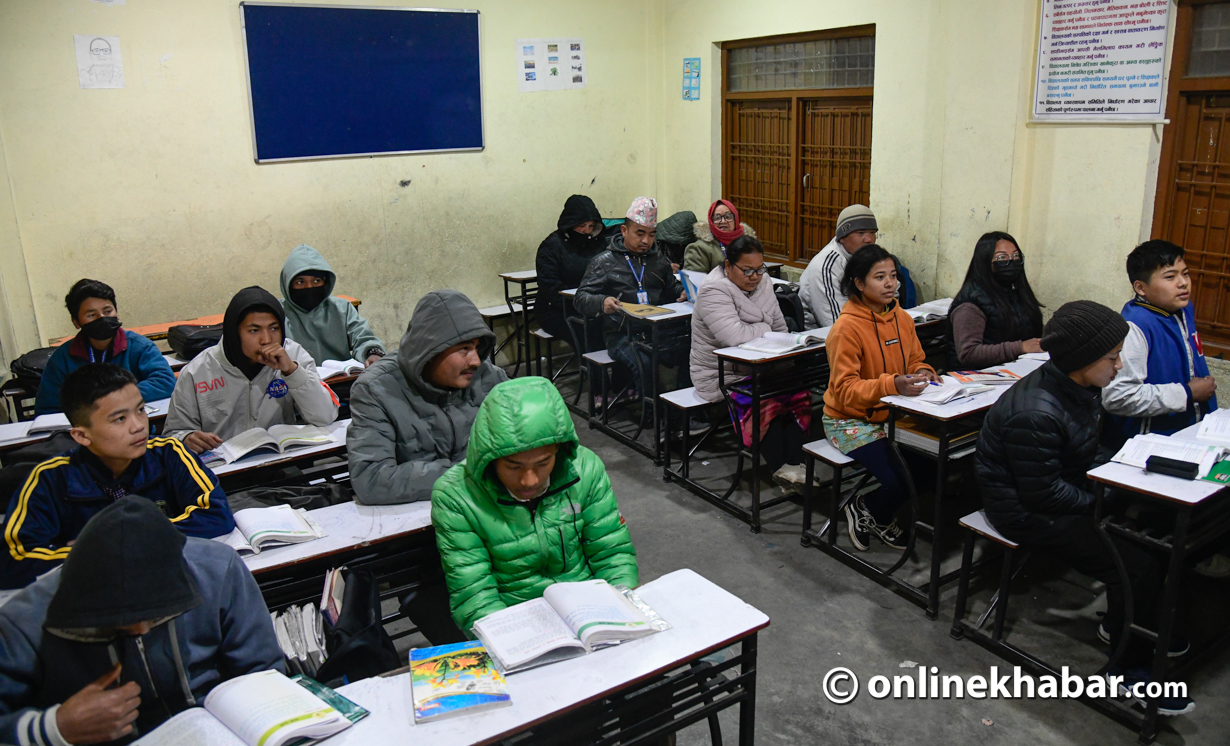
According to Principal Rajesh Humagai, Nandi Ratri Secondary School boasts a 76-year history. Initially, there were two schools named Nandi in Naxal: Nandi Primary School, established in 1947, and Nandi Ratri Secondary School, founded in 1950. Until 1973, these schools operated in the same building but under different management.
In 1973, they merged to form Nandi Ratri Secondary School, functioning as both a night and day school under unified principalship, management, and administration. However, since 1990, Nandi Ratri Secondary School has had separate management. Principal Humagai explained that the government at the time initiated night classes to enhance the educational qualifications of government employees, including police, army personnel, and royal palace workers.
Currently, Nandi Ratri Secondary School offers classes from six to 12 during evening hours. Originally providing education up to class 10, the school expanded its curriculum to include classes 11 and 12 in 2019.
With 300 students studying, the school administration now feels it is time for expansion.
“If we had a separate school building and bus service, we could help even more students,” he says.






